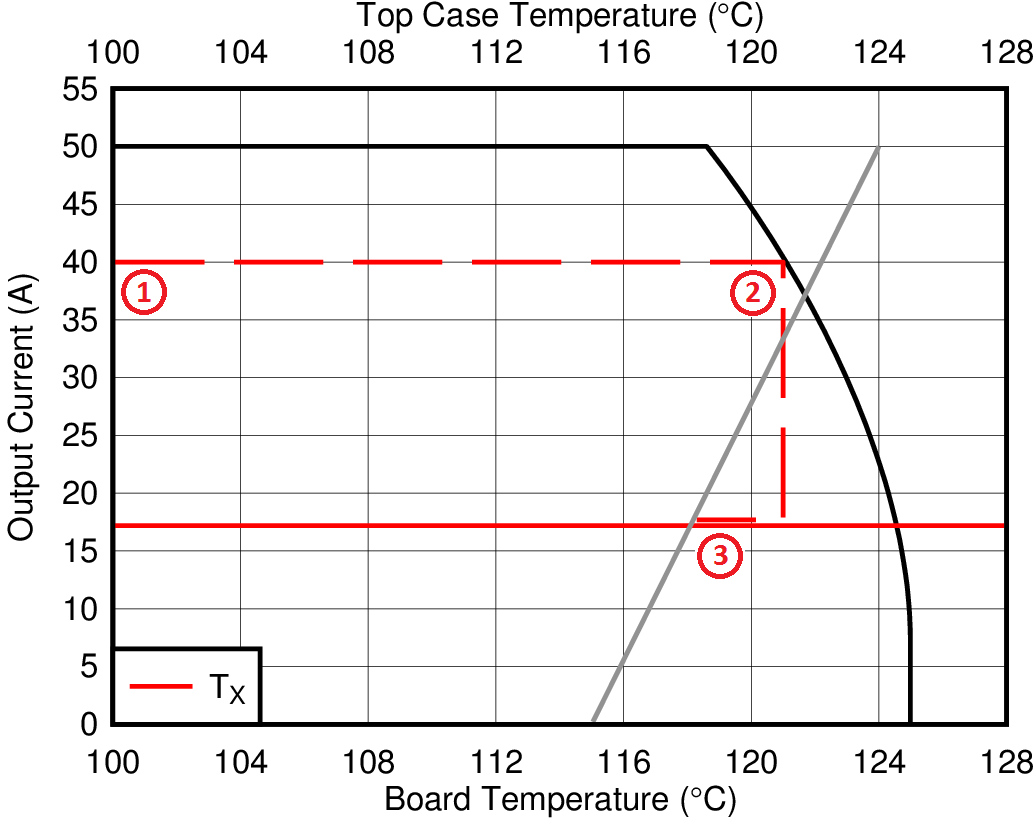SLPS598E May 2017 – June 2024 CSD88584Q5DC
PRODUCTION DATA
- 1
- 1Features
- 2Applications
- 3Description
- 4Specifications
-
5Application and Implementation
- 5.1 Application Information
- 5.2 Brushless DC Motor With Trapezoidal Control
- 5.3 Power Loss Curves
- 5.4 Safe Operating Area (SOA) Curve
- 5.5 Normalized Power Loss Curves
- 5.6 Design Example – Regulate Current to Maintain Safe Operation
- 5.7 Design Example – Regulate Board and Case Temperature to Maintain Safe Operation
- 6Layout
- 7Device and Documentation Support
- 8Revision History
- 9Mechanical, Packaging, and Orderable Information
Package Options
Mechanical Data (Package|Pins)
- DMM|22
Thermal pad, mechanical data (Package|Pins)
Orderable Information
5.7.3 Calculating SOA Adjustments
- SOA adjustment for switching frequency ≈ 1.7°C (Figure 4-4)
- SOA adjustment for input voltage ≈ 0.6°C (Figure 4-5)
- SOA adjustment for duty cycle ≈ 0.4°C (Figure 4-6)
- Final calculated SOA adjustment = 1.7 + 0.6 + 0.4 ≈ 2.7°C
In the Section 5.6 section above, the estimated power loss of the CSD88584Q5DC would increase to 6.7W. In addition, the maximum allowable board temperature would have to increase by 2.7°C. In Figure 5-5, the SOA graph was adjusted accordingly.
- Start by drawing a horizontal line from the application current (40A) to the SOA curve.
- Draw a vertical line from the SOA curve intercept down to the TX line.
- Adjust the intersection point by subtracting the temperature adjustment value.
In this design example, the SOA board/ambient temperature adjustment yields a decrease of allowed junction temperature of 2.7°C from 121.0°C to 118.3°C. Now it is known that the intersection of the case and PCB temperatures on the TX line must stay below this point. For instance, if the power block case is observed operating at 124°C, the PCB temperature must in turn be kept under 115°C to maintain this crossover point.
 Figure 5-5 Regulate Temperature to Maintain Safe Operation
Figure 5-5 Regulate Temperature to Maintain Safe Operation